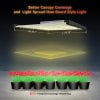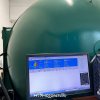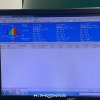HYPHOTONFLUX
Well-Known Member
If you have been researching LED horticulture lighting systems for your plant growth facility, you have likely been bombarded with a variety of metrics that lighting manufacturers use to market their products. Some terms and acronyms you are likely to see include: watts, lumens, LUX, foot candles, PAR, PPF, PPFD, and photon efficiency. While all of these terms do relate to lighting, only a select few really tell you the important metrics of a horticulture lighting system.I'm here to told you the difference between them.
What is Grow Light Spectrum and PAR?
Grow light spectrum refers to the electromagnetic wavelengths of light produced by a light source to promote plant growth. For photosynthesis, plants use light in the PAR (photosynthetic active radiation) region of wavelengths (400nm-700nm) measured in nanometers (nm).
Nanometers are a universal unit of measurement but also used to measure spectrum of light – humans can only detect visible light spectrum wavelengths (380-740nm). Plants, on the other hand, detect wavelengths including our visible light and beyond, to include UV and Far Red spectrums.
Typically, chlorophyll, the molecule in plants responsible for converting light energy into chemical energy, absorbs most light in blue and red light spectrums for photosynthesis. Both red and blue light are found in the peaks of the PAR range.
Things to remember; PAR is the region of wavelengths, measured in nm. Plants predominantly use light in the range of 400-700 nm wavelength.
SPECTRUM OF HYPHOTONFLUX HPF SERIES GROW LIGHT:HPF3000,HPF4000

Photosynthetic Photon Flux (PPF)
The PPF or Photosynthetic Photon Flux is the total amount of light in the PAR zone that is produced by a light source each second.
So PPF measures the “photosynthetically active photons emitted by a lighting system per second”.
Expressed in μmol/s.
With the PPF of a grow light, you can calculate or estimate how many lamps you are going to need per area to reach your required light level on the plants.
Take as an example a strawberry grower who is going to do a winter cultivation with a light level of 200µmol/sm².
With an 8 meter cap and 5 meter pole distances each growing area is 40m².
So we need in total 40m² x 200µmol/sm² = 8000µmol of light for this area.
If a single LED grow light produces a PPF of 2000µmol/s, you require 4 lamps per growing area.
The PPF does not tell us how much of the measured light actually lands on the plants or any other surface.
So keep in mind not every lamp with the same PPF is as effective in bringing that light down to the crops.
Photosynthetic Photon Flux Density (PPFD)
The Photosynthetic Photon Flux Density (PPFD) measures the light that actually arrives at the crop canopy in the Par zone.
The amount of light that actually reaches your plants within the PAR region or the number of photosynthetically active photons that fall on a given surface each second.
The PPFD is expressed in μmol/s.m².
The PPFD as of today is the best available measure to compare grow lights in the market.
On lamp level the manufacturer specifies the PPF or light output of the grow light in the PAR zone.
Together with the light distribution of the lamp and the physical placement of the lamps on the project, the PPFD can be simulated.
You can easy see that lamps with a similar light level sometimes don’t give similar results on PPFD on the crops, which mainly comes from the differences in light distribution.
So the art of correct lighting is to make sure the light is in the first place well distributed with a minimum of light fluctuations on the crop, but in the second place to ensure a maximum of light falling as direct as possible on the plants with a minimum of light spill.
Therefore,this kind of bar light is popular with growers because of its excellent light spread.

Photosynthetic Photon Efficacy(PPE) refers to how efficient a horticulture lighting system is at converting electrical energy into photons of PAR. Many horticulture lighting manufacturers use total electrical watts or watts per square foot as a metric to describe light intensity. However, these metrics really don’t tell you anything since watts are a measurement describing electrical input, not light output. If the PPF of the light is known along with the input wattage, you can calculate how efficient a horticulture lighting system is at converting electrical energy into PAR. As a reminder, the unit for PPF is μmol/s, and the unit to measure watts is Joule per second (J/s), therefore, the seconds in the numerator and denominator cancel out, and the unit becomes µmol/J. The higher this number is, the more efficient a lighting system is at converting electrical energy into photons of PAR.
So PPE=PPF/POWER

For example:
The light output PPF of HPF4000 is 1300µmol/s,its actual power is 480 watts,so PPE(Efficiency)=1300/480=2.708333µmol/j
In order to invest in the proper horticulture lighting system to meet your cultivation and business goals, you need to know the PPF, PPFD, and photon efficiency to make informed purchasing decisions. However, these three metrics should not be used as sole variables to base a purchasing decisions.
You also need to consider other factors before purchasing a light, such as heat dissipation, energy efficiency, light lifespan, waterproof, etc.
Welcome contact us to learn more about LED
Our store:HYPHOTONFLUX LED GROW LIGHT
Code for HPF4000 grow light:05HPF4000
What is Grow Light Spectrum and PAR?
Grow light spectrum refers to the electromagnetic wavelengths of light produced by a light source to promote plant growth. For photosynthesis, plants use light in the PAR (photosynthetic active radiation) region of wavelengths (400nm-700nm) measured in nanometers (nm).
Nanometers are a universal unit of measurement but also used to measure spectrum of light – humans can only detect visible light spectrum wavelengths (380-740nm). Plants, on the other hand, detect wavelengths including our visible light and beyond, to include UV and Far Red spectrums.
Typically, chlorophyll, the molecule in plants responsible for converting light energy into chemical energy, absorbs most light in blue and red light spectrums for photosynthesis. Both red and blue light are found in the peaks of the PAR range.
Things to remember; PAR is the region of wavelengths, measured in nm. Plants predominantly use light in the range of 400-700 nm wavelength.
SPECTRUM OF HYPHOTONFLUX HPF SERIES GROW LIGHT:HPF3000,HPF4000

Photosynthetic Photon Flux (PPF)
The PPF or Photosynthetic Photon Flux is the total amount of light in the PAR zone that is produced by a light source each second.
So PPF measures the “photosynthetically active photons emitted by a lighting system per second”.
Expressed in μmol/s.
With the PPF of a grow light, you can calculate or estimate how many lamps you are going to need per area to reach your required light level on the plants.
Take as an example a strawberry grower who is going to do a winter cultivation with a light level of 200µmol/sm².
With an 8 meter cap and 5 meter pole distances each growing area is 40m².
So we need in total 40m² x 200µmol/sm² = 8000µmol of light for this area.
If a single LED grow light produces a PPF of 2000µmol/s, you require 4 lamps per growing area.
The PPF does not tell us how much of the measured light actually lands on the plants or any other surface.
So keep in mind not every lamp with the same PPF is as effective in bringing that light down to the crops.
Photosynthetic Photon Flux Density (PPFD)
The Photosynthetic Photon Flux Density (PPFD) measures the light that actually arrives at the crop canopy in the Par zone.
The amount of light that actually reaches your plants within the PAR region or the number of photosynthetically active photons that fall on a given surface each second.
The PPFD is expressed in μmol/s.m².
The PPFD as of today is the best available measure to compare grow lights in the market.
On lamp level the manufacturer specifies the PPF or light output of the grow light in the PAR zone.
Together with the light distribution of the lamp and the physical placement of the lamps on the project, the PPFD can be simulated.
You can easy see that lamps with a similar light level sometimes don’t give similar results on PPFD on the crops, which mainly comes from the differences in light distribution.
So the art of correct lighting is to make sure the light is in the first place well distributed with a minimum of light fluctuations on the crop, but in the second place to ensure a maximum of light falling as direct as possible on the plants with a minimum of light spill.
Therefore,this kind of bar light is popular with growers because of its excellent light spread.

Photosynthetic Photon Efficacy(PPE) refers to how efficient a horticulture lighting system is at converting electrical energy into photons of PAR. Many horticulture lighting manufacturers use total electrical watts or watts per square foot as a metric to describe light intensity. However, these metrics really don’t tell you anything since watts are a measurement describing electrical input, not light output. If the PPF of the light is known along with the input wattage, you can calculate how efficient a horticulture lighting system is at converting electrical energy into PAR. As a reminder, the unit for PPF is μmol/s, and the unit to measure watts is Joule per second (J/s), therefore, the seconds in the numerator and denominator cancel out, and the unit becomes µmol/J. The higher this number is, the more efficient a lighting system is at converting electrical energy into photons of PAR.
So PPE=PPF/POWER

For example:
The light output PPF of HPF4000 is 1300µmol/s,its actual power is 480 watts,so PPE(Efficiency)=1300/480=2.708333µmol/j
In order to invest in the proper horticulture lighting system to meet your cultivation and business goals, you need to know the PPF, PPFD, and photon efficiency to make informed purchasing decisions. However, these three metrics should not be used as sole variables to base a purchasing decisions.
You also need to consider other factors before purchasing a light, such as heat dissipation, energy efficiency, light lifespan, waterproof, etc.
Welcome contact us to learn more about LED
Our store:HYPHOTONFLUX LED GROW LIGHT
Code for HPF4000 grow light:05HPF4000


















